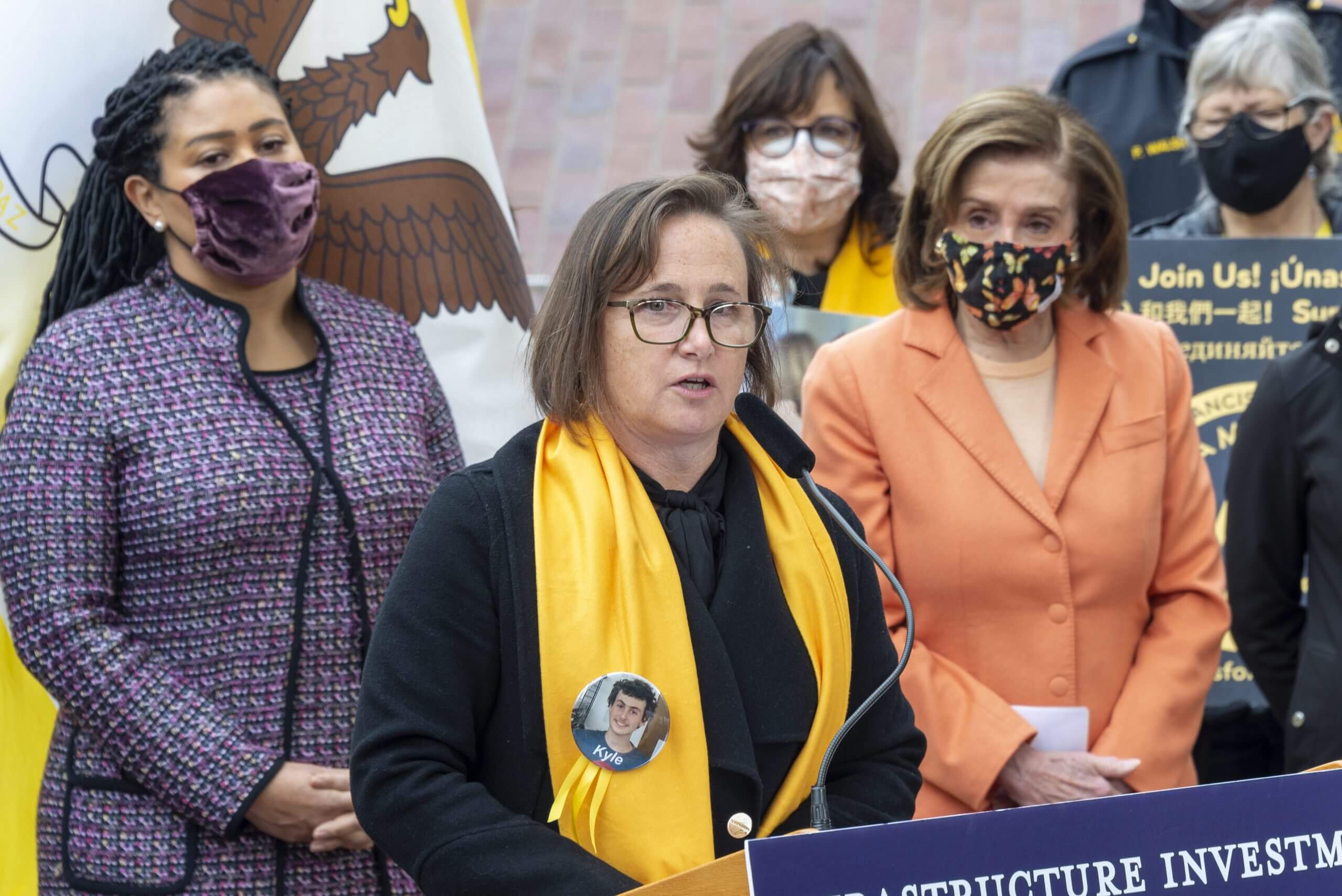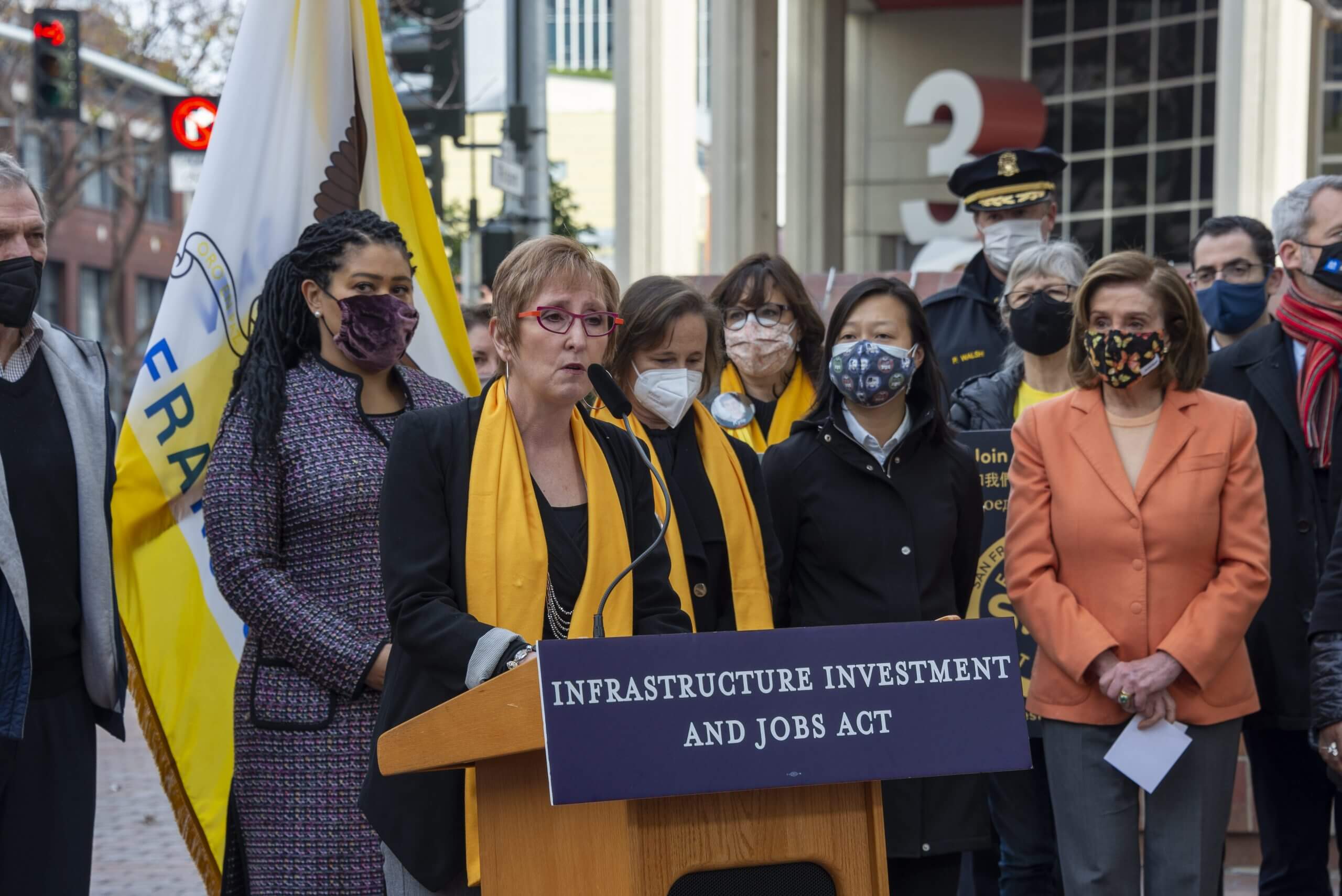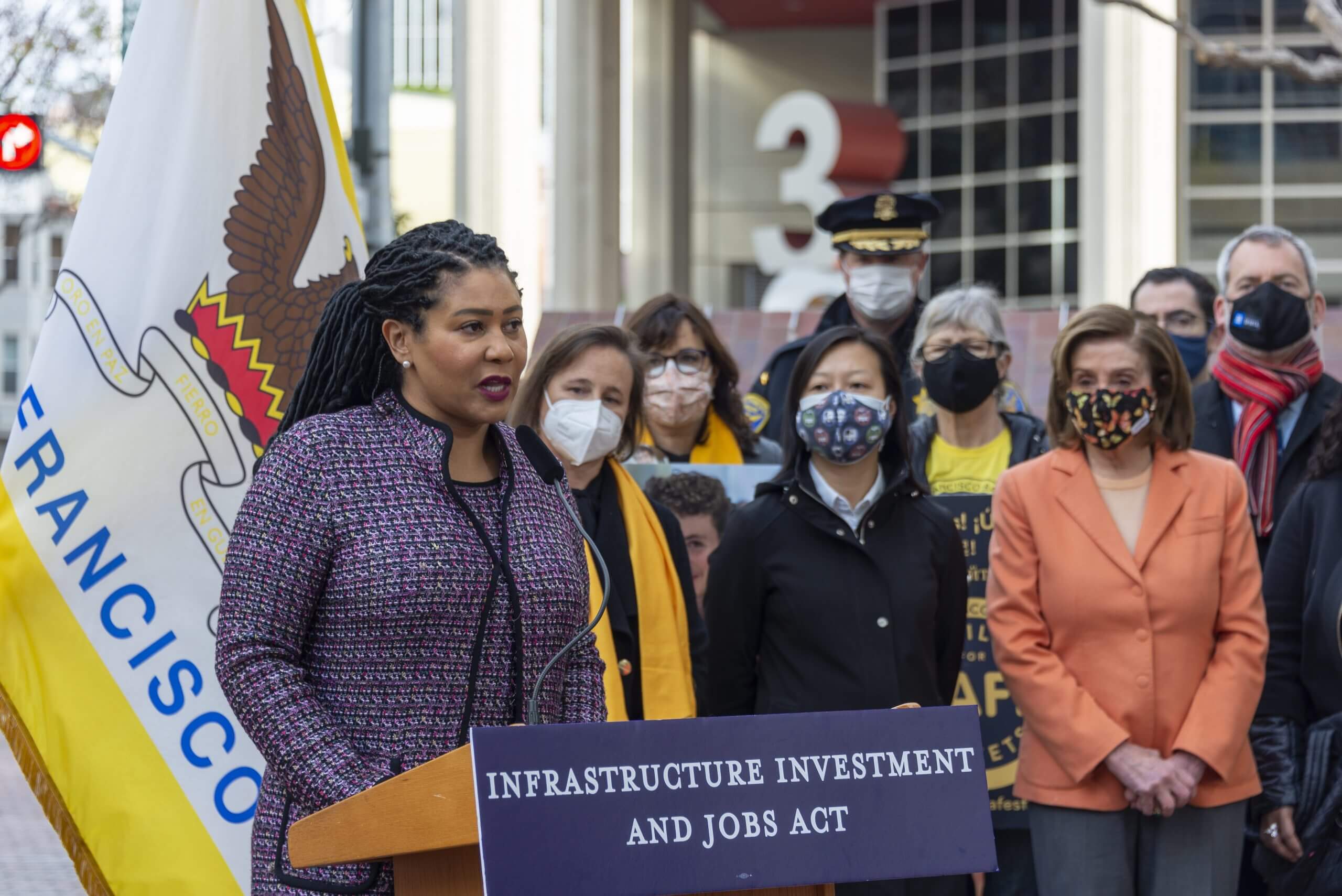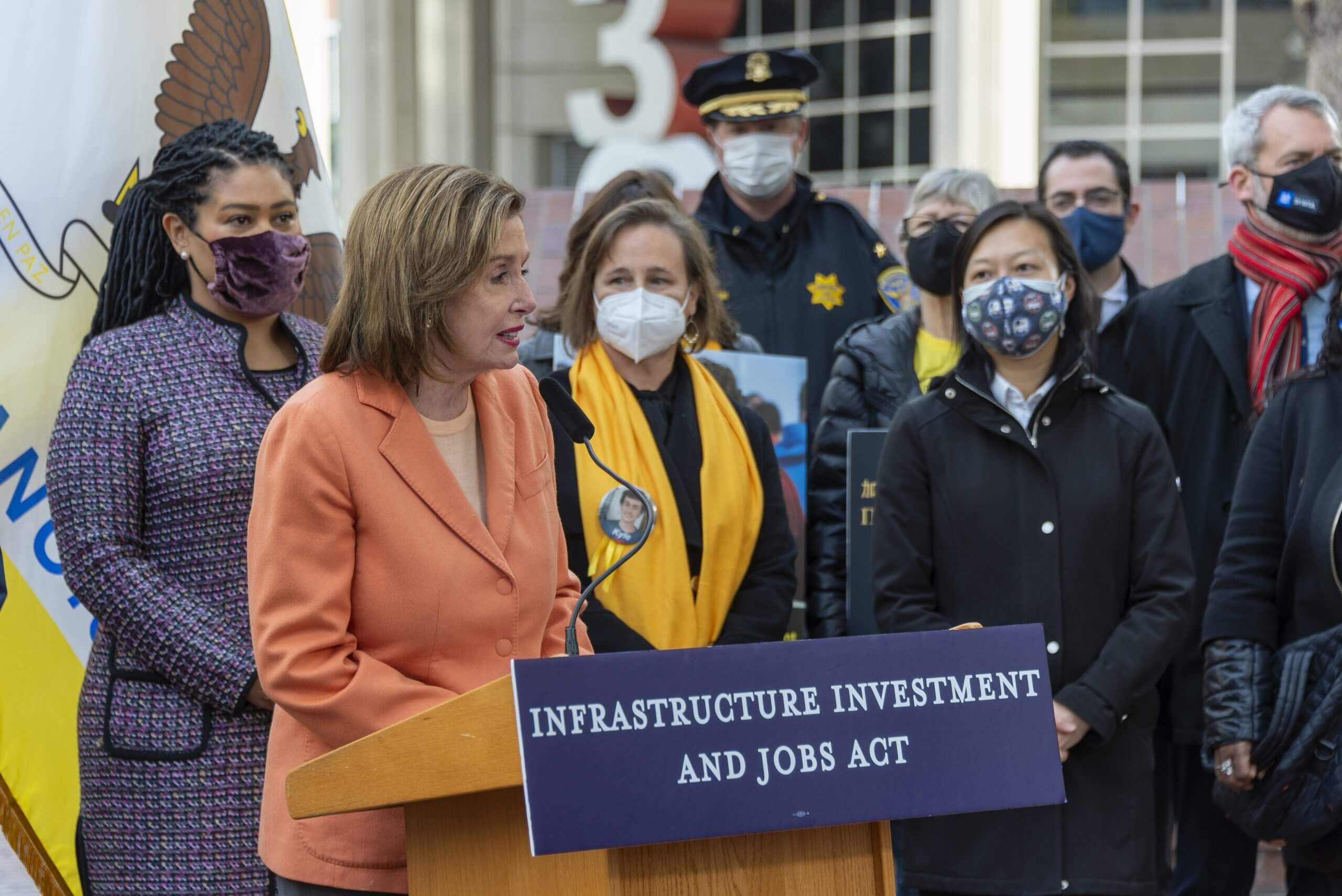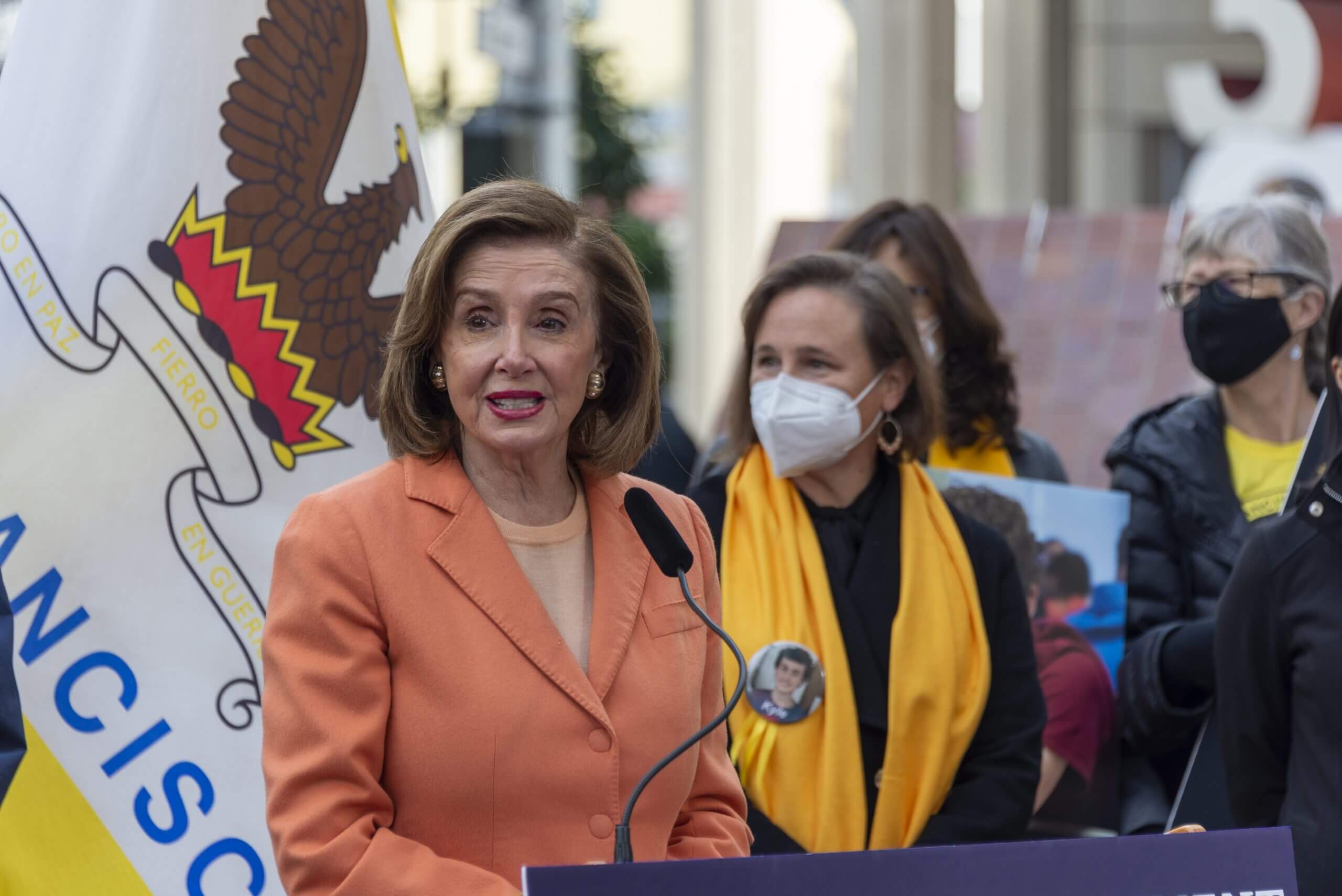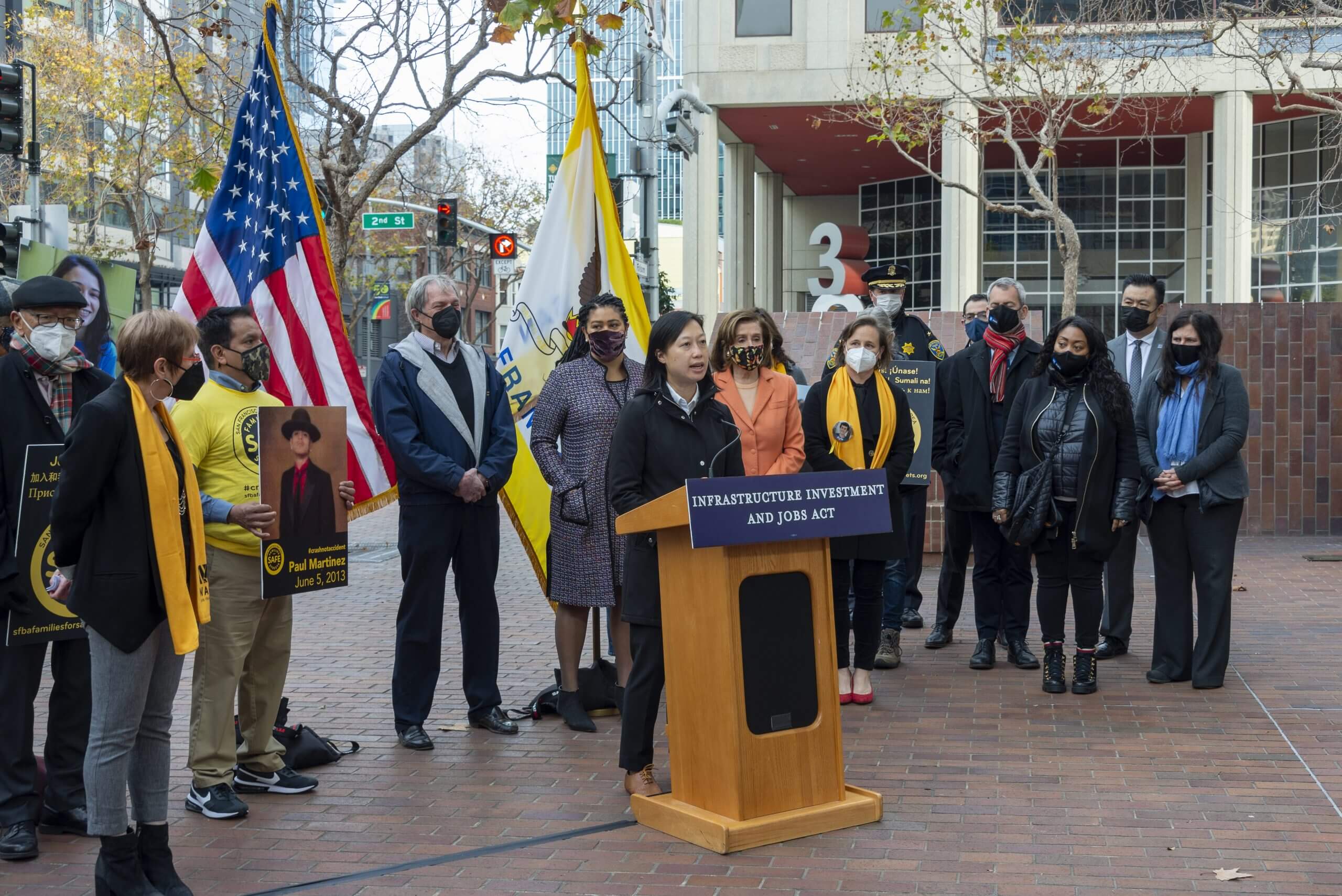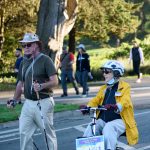Why this moment meant so much to crash survivors and loved ones of crash victims
On a brisk morning in downtown San Francisco two weeks ago, House Speaker Nancy Pelosi walked up to Gina LaBlanc and looked at the poster she was holding.
“Kyle matters,” Speaker Pelosi read aloud.
It was a moment Gina had longed for – the opportunity to share her son’s story with a decisionmaker at the highest level of government and in a position to make change happen.
“This was my son Kyle,” Gina said. Speaker Pelosi remarked on what a beautiful child Kyle was. She listened as Gina told her about her golden-haired 18-year-old: a computer genius, basketball player, and occasional disc jockey.
In January, 2016, Kyle was hit and killed by a speeding driver as he walked to a light rail station.
Gina took a breath and then said one last thing to Speaker Pelosi. “I’m turning my pain into purpose so other mom’s won’t have to feel this.”
The Speaker replied, “It’s wonderful what you are doing.”
Speaker Pelosi then approached Joe Martinez and Stephen Bingham and listened to these parents talk about the losses of their children. Sylvia Bingham was killed at the age of 22 by a speeding truck driver as she cycled to the AmeriCorps job that she loved. Paul Martinez, a Boys & Girls Club volunteer, was killed by a reckless driver as he was walking home.
On that morning, Families for Safe Streets advocates including several people who were severely injured in crashes, stood with Speaker Pelosi with a sense of relief and hope. Not only was their suffering seen by one of the most powerful people in our country, Speaker Pelosi was there to talk about what the President’s new Infrastructure Investment and Jobs Act (IIJA) would mean for making life-saving changes to our streets.
The Infrastructure Investment and Jobs Act signed by President Biden in November is a groundbreaking moment for safe streets. It is the first time such legislation will determine projects based on their ability to protect vulnerable people on foot or riding a bicycle. It sends a clear message that the country’s approach to traffic safety can and must change – and it backs this up with vital funding for proven approaches to prevent crashes. Read this analysis of the Act related to traffic safety.
The Infrastructure Investment and Jobs Act includes $14 billion dollars nationally for safety projects to reduce vehicle speeds, calm traffic, and create protected intersections and bikeways, among other life-saving improvements. There is a $1 billion commitment to reconnect communities that have been neglected and physically separated by deadly, high-speed arterial roadways like the road where Kyle LaBlanc was killed.
The Infrastructure Investment and Jobs Act is an essential step at the federal level to begin to shift transportation policy away from prioritizing moving traffic at all costs. Because of the infrastructure bill, San Francisco and so many more cities will be better positioned to take on traffic safety and save lives. California will receive $242 million for projects to reduce severe and fatal traffic crashes. Read more in the San Francisco Chronicle.
The Families for Safe Streets community and Walk San Francisco will do everything in our power to support national efforts such as passing a federal resolution in support of zero traffic deaths by 2050. And we will continue to tell leaders that Kyle and all those lost in in traffic crashes matter.
Learn more about San Francisco Bay Area Families for Safe Streets. Questions? Contact Aly at aly@walksf.org. Many thanks to Families for Safe Streets member Julie Nicholson, who spoke about the crash she survived at the event. With gratitude to Sergio Ruiz for sharing the photos below.



